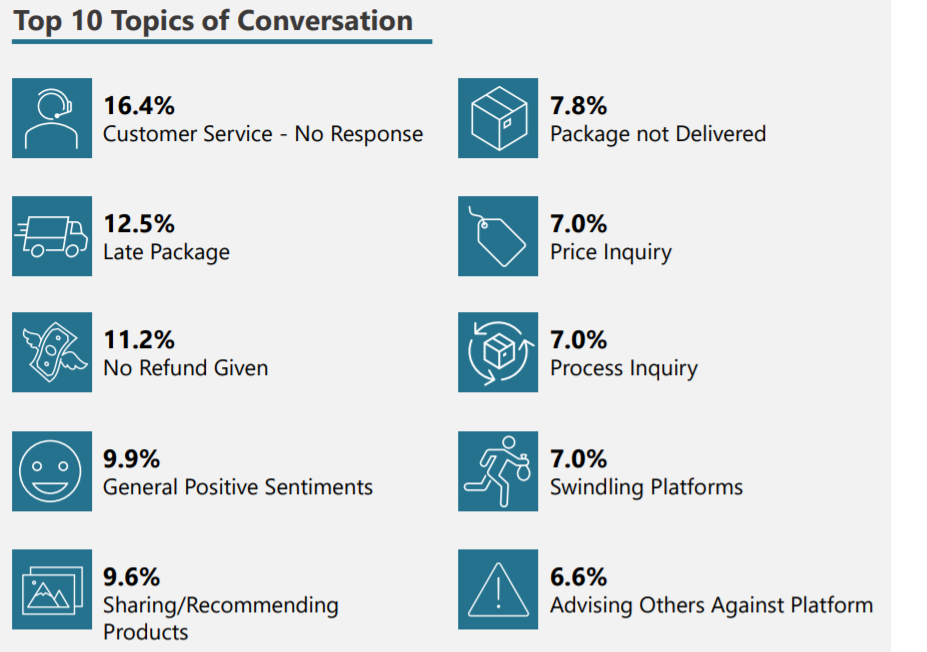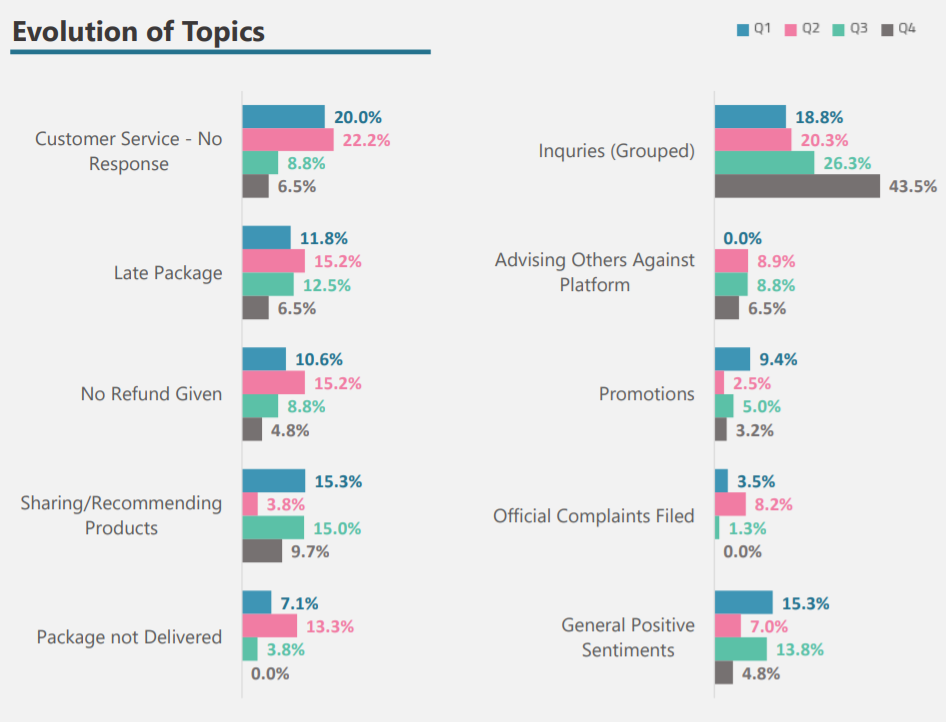The global e-commerce landscape underwent major changes in 2020. As more and more consumers flocked to e-commerce platforms to do their shopping, tech titans began introducing features that enabled shopping for products on their platform. This gave rise to initiatives such as live-stream commerce, social commerce, etc. In the GCC, prior to the pandemic, e-commerce was in a nascent state but the lockdown forced many to shop online. Now, it's expected to become a $50bn market by 2025.
Market research company, Ipsos, used their social listening tool, Synthesio, to understand how GCC consumers' sentiments around online shopping changed during the past year. Keep in mind, this was a nascent market for e-commerce and being suddenly thrusted into it can bring about negative sentiment. And the study mirrors this opinion. As lockdowns ensued globally, the conversations around online shopping began rising. The surge in shoppers resulted in an initial negative sentiment around online purchasing. While this behavior didn't last and conversations went back to previous levels, online sentiment towards e-commerce experiences remains mostly negative.

During the initial stages of the pandemic, the study noted consumers reporting multiple pain points during the online shopping experience. These pain points ranged from zero responses from customer service teams, late deliveries, no refunds, etc. As people contined exploring the various online platforms, the conversations began to shift to focus on price inquiries, overall online shopping procedures, delivery times, shipping coverage as well as info on specific products of interest.

As the year progressed, e-commerce platforms began adapting and responding to consumers' grievances. During the initial stages, the platforms experienced a surge in demand and were overwhelmed, resulting in many complaints about servicing and delivery timelines. By the second half of the year, as ecommerce platforms adapted, the number of issues customers faced dropped significantly, and official complaints all but disappeared.

The bulk of conversations around e-commerce is during the exploration phase where consumers are exploring their options whether it's making inquiries about the price or learning about product specifics or watching reviews, etc. With many people just begining to understand how e-commerce platforms work, platforms need to take the time to educate its users through blog posts or tutorials, in order to ensure a smooth process for customers.
According to the study, the key pain points that platforms need to focus on are late deliveries and poor customer service. Customers' anger tends to intensify when a package is late as they tend to contact customer service to learn the reason for the delay and when customer service fails to help, their anger intensifies, resulting in a negative experience for consumers. Consumers then take to social to inform others about the poor service of the platform, thereby ruining their reputation.
Platforms need to take extra care, especially with their customer service team. It can be the make or break point. Amazon as an e-commerce platform is successful not because they deliver quickly but because of their attention to detail when it comes to their customer service. Being a customer-centric organization from the get-go has helped develop major decisions with keeping the customer mind. Other platforms should learn from this and execute accordingly.






